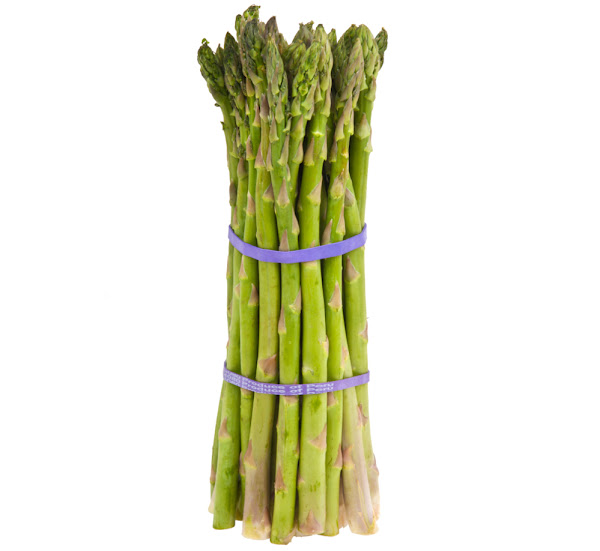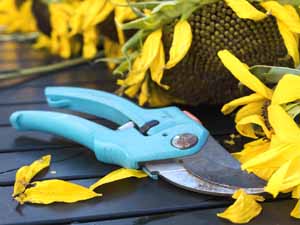Growing asparagus in home garden is relatively easy as long as the drainage system is good and if you are able to maintain moisture in the soil during the growing season.
Growing asparagus is actually possible in almost anywhere even in a new section of the garden that has never been cultivated.
If you are a beginner in gardening then you should definitely try growing asparagus in your home garden.
Asparagus (Asparagus officinalis) is widely cultivated as a vegetable crop around the world. It is known by some other names such as garden asparagus, sparrow grass etc.
The main benefit of growing asparagus is ‘it’s a perennial plant’. That means, asparagus plants will return year after year once it gets established in the garden.
You actually need to be patient, because growing asparagus may take some time (may take 2-3 years to truly get started and produce).
But it’s really worth waiting, because the plant can be productive for up to 25 years.
Asparagus has both male and female plants with the female plants producing berries. The plants can thrive well in almost all agroclimatic conditions.
So, growing asparagus in your home garden can be a great addition to your garden.
How to Start Growing Asparagus
Growing asparagus will be easy for you if you follow these step by step guide for growing asparagus organically in home garden.
You don’t have to plant asparagus each year, and you can harvest for many years once the plants get established. However, here we are describing more about growing asparagus from planting, caring to harvesting.
Choose a Variety
First of all, choose a good variety for growing asparagus organically in your home garden. There are not actually several varieties available like many other common garden vegetables.
There are two common types which are popular and grown by the home gardeners. These two types are purple and white asparagus.
The purple type is actually bred to be purple in color, but turns green when it is cooked. And this type tend to have thicker spears, but fewer of them.
While the white asparagus is not actually a type. The asparagus which simply grows in absence of sunlight prevent chlorophyll from developing and eventually turns white.
In terms of taste, the white asparagus is slightly sweet but has less fiber than the green asparagus.
Within these two types, there are some varieties available. Some popular asparagus varieties are Jersey Giant, Jersey Knight, Purple Passion etc.
Purchase Seeds/Crowns
You can start growing asparagus either from seeds or from crowns (roots). We recommend growing asparagus from crowns. You should be able to purchase the crowns from any of your nearest nurseries.

Best Time for Growing Asparagus
Asparagus grows well throughout the year, except the extreme summer heat. The crowns are generally planted in early spring as soon as the soil can be worked.
Preparing the Soil
Asparagus grows well in sandy or sandy-loamy soil with the availability of full sun. The optimum pH range for growing asparagus is between 6.5 and 7.5. So, testing the pH level of the soil will be good, because the plants are going to stay there for several years.
You can prepare a planting bed for growing asparagus. A raised bed will be good, measuring about 4 feet wide. As the plants are going to stay there for several years, so you have to add enough fertilizers in the soil.
Digg the soil well and removed all perennial weeds and roots of other plants. Then add plenty of well-rotted aged manure or compost.
Keep the bed for more than one month after digging and adding organic fertilizers. And then plant the seeds or crowns.
Asparagus plants don’t like to have their feet wet, so ensure a good drainage system. Raised bed will be good for this purpose.
Planting
The asparagus is grown either from seeds or from crowns. We recommend growing asparagus from crowns. However, here we are describing about both methods for growing asparagus in your home garden.
The asparagus seeds are relatively slow to germinate, taking about 3 weeks to germinate. And the growth rate of the seedlings is also slow. You can sow the seeds indoor 12-14 weeks before the target seedling set-out date. Sow the seeds about 1/4 inch deep.
In case of growing asparagus from crowns, keep the crowns covered with a damp cloth or newspaper in a cool and dark place until planting time.
While planting the crowns, dig shallow trenches of about 12 inches wide and 6 inches deep. Space the crowns 1 to 1.5 feet apart in rows that are 4-5 feet apart.
Then spread the roots out in the trench with the buds pointing upward. And after planting, fill the trench with soil completely.
Caring
After planting, you will need to take additional care for establishing the plants. Here we are describing more about the additional caring steps for growing asparagus organically in home garden.
Fertilizing: You will need to provide additional fertilizers for growing asparagus plants. Again, using well-rotted aged manure or homemade compost will be good for this purpose. Additional liquid fertilizers (such as compost tea) will also be good for the plants.
Watering: Keeping the soil moist constantly is important, but not wet. You will need to water regularly.
Mulching: Mulching not only helps to retain moisture in the soil, but also helps to prevent weeds from the garden. Mulch heavily (4-8 inches) when the trench is filled. You can use hay, dried leaves, grass clippings, straw or compost as mulch. Also keep the bed mulched thickly during the second year.
Controlling Weeds: Weeds will consume most of the nutrients from the soil. So controlling the weeds is important. You can hoe between the rows for controlling weeds. Although mulching will help to prevent most of the common garden weeds.
Additional Caring: Do not harvest the spears in the first year, as the plants need more time for growing out their root system. But cut down the dead foliage in late fall and side-dress with compost. Keep the bed mulched thickly during the second year, side-dress in spring and early fall and cut down dead foliage in late fall.
Pests and Diseases
The asparagus plants are not free from pests and diseases. Asparagus beetles, crown rot, cutworms, slugs and rust are some common problems for growing asparagus.
You should use homemade organic methods for controlling all these pests and diseases.
Harvesting
Asparagus plants are sow to grow, and it can take up to 3 growing season to harvest. Although you can expect to harvest some from the second year, if the plants grow well.
While harvesting, harvest the spears which are approximately 8 inches tall by cutting the spears off with a knife or scissors at the soil line.
During peak growth period, check your plants every other day for harvest-ready spears. Asparagus spears grow rapidly and may become too woody before you know it.
But stop harvesting when the diameter of the spears decreases to the size of a pencil. At that point, you should let the plants grow and gain strength for next spring.
These are the common methods for growing asparagus organically in the home garden. Hope you have enjoyed this guide! Good luck!






